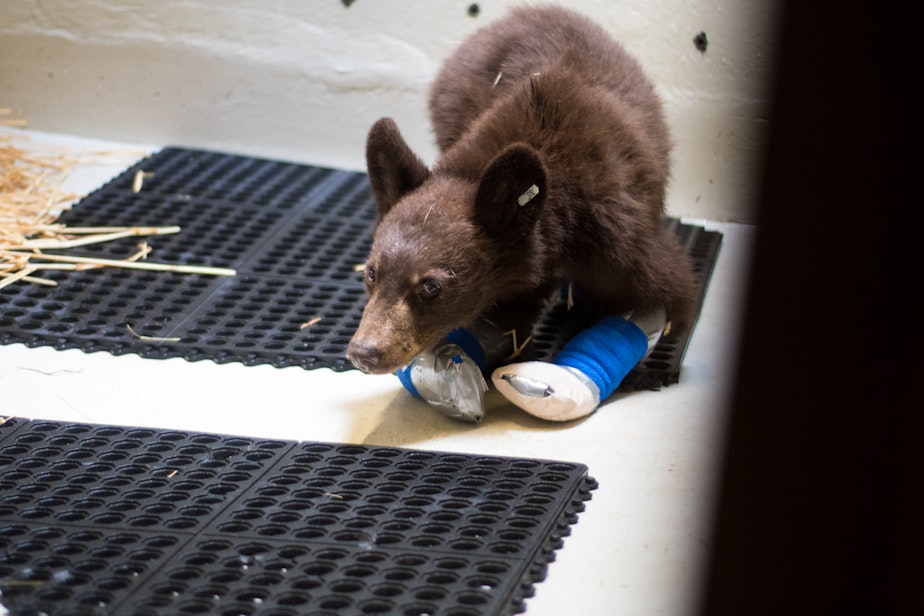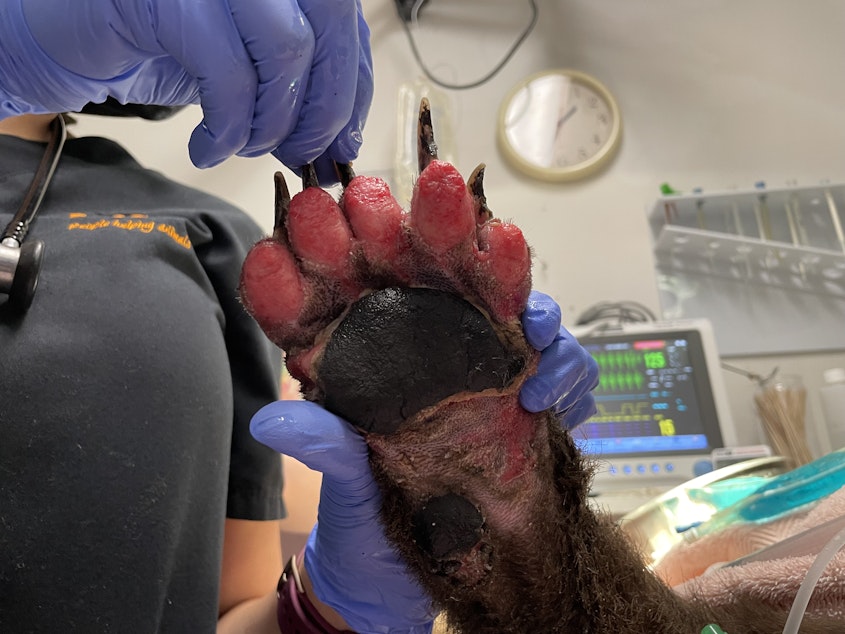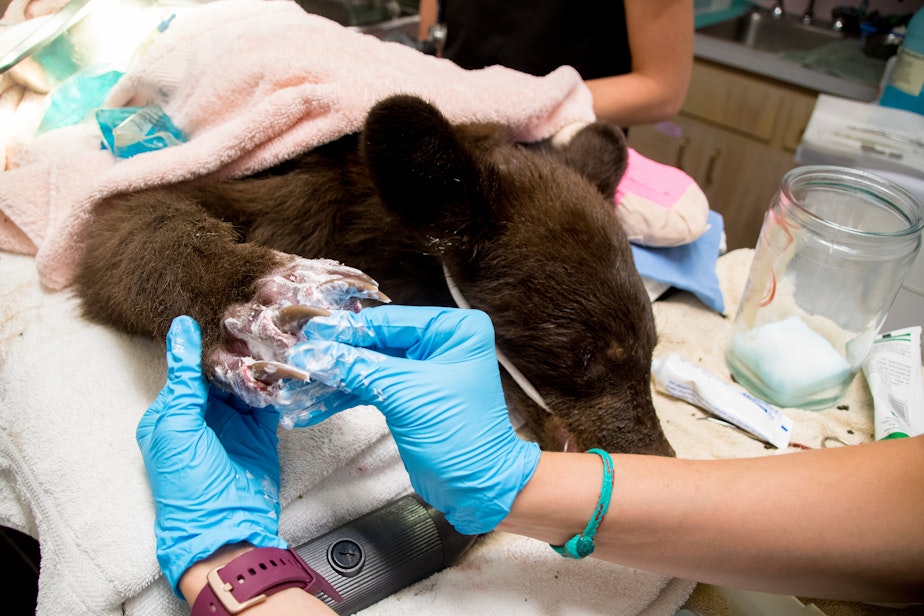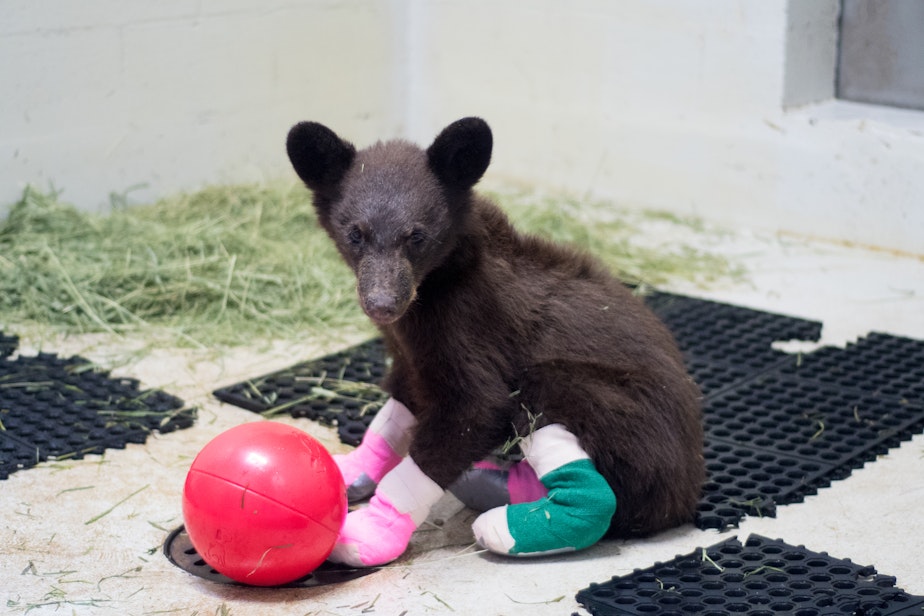The 2021 wildfire season is keeping NW veterinarians busy with uncommon patients

Wildfires burning in eastern and central Washington are not only keeping firefighters busy, they're keeping wildlife specialists on their toes as wild animals turn up badly burned.
Dr. Nicki Rosenhagen is a veterinarian for the nonprofit Progressive Animal Welfare Society, or PAWS, in Lynwood. They're more used to seeing animals displaced by the fires, another concern that grows every year.
"In addition to the loss of animal lives and injuries to these animals, now, we're losing habitat," Rosenhagen says.
She notes that fires can be natural and the Earth is resilient, "But when they are being burned at such a fast rate, the concern is the turnover time is not fast enough."
Fire and human encroachment is forcing animals into cramped spaces. And with nowhere to go, burned black bears have arrived at PAWS for the first time.
Sponsored
The group has admitted four bears this year. One was so badly injured it had to be put down.

The first, a female adult, was admitted at the end of July with severe burns on her face and ears as well as mild burns on all four feet.
"And at the time, we kind of thought that this was going to be just a one-off," Rosenhagen recalls. "We were feeling really good that that would, hopefully, just be a one-and-done. But then, we got the call that there were more bears affected."
Among them are two 8-month-old black bear cubs, believed to be siblings. The pair suffered burns on their paws in the Twenty-Five Mile Fire near Lake Chelan and the Cedar Creek Fire near Winthrop. The burns turned the pads of the toes a bright, angry red.
Sponsored
Rosenhagen says a lot in the field of wildlife medicine is new and still developing in real-time. That's good for specialists who have gotten used to learning on the job. She has standard veterinary training, of course, but not with wild animals and certainly not wild animals who have suffered painful, frightening burns.

"We can't just go in and hold these bear cubs and change their bandages and give them their medications," she explains. "It's been a lot of sedation ... But so far it's been going really well."
It's not just about the ease of handling the animals, either.
It's about keeping wild animals wild. Rosenhagen says they're treating the cubs with the intention of not becoming friends
Sponsored
"We are geared to get these animals back out into the wild," she explains.
That means cuddle sessions and photo-ops are out of the question, because "having wild animals be familiar and comfortable with humans is definitely not in their best interest."

Sedating the cubs to maintain that boundary is emotionally difficult, Rosenhagen says. The bears don't seem too fazed, though.
"They're doing really well," she says of the cubs. "They're moving around really well. They're eating everything. They're playing."
Sponsored
In short: They're much more resilient than humans.
"We don't have the ability to replicate what mom and dad teach them," Rosenhagen says. "But what we can do" is work in the background to help them learn.
PAWS will bring the bears in its care together when it's safe, so they can learn the skills they'll need to survive in the wild together. They'll remain in captivity through the winter and hibernation, until their new home somewhere in the mountains has thawed.
You can make a donation to help the cubs as well as other injured and orphaned wild animals at the PAWS Wildlife Center here.




